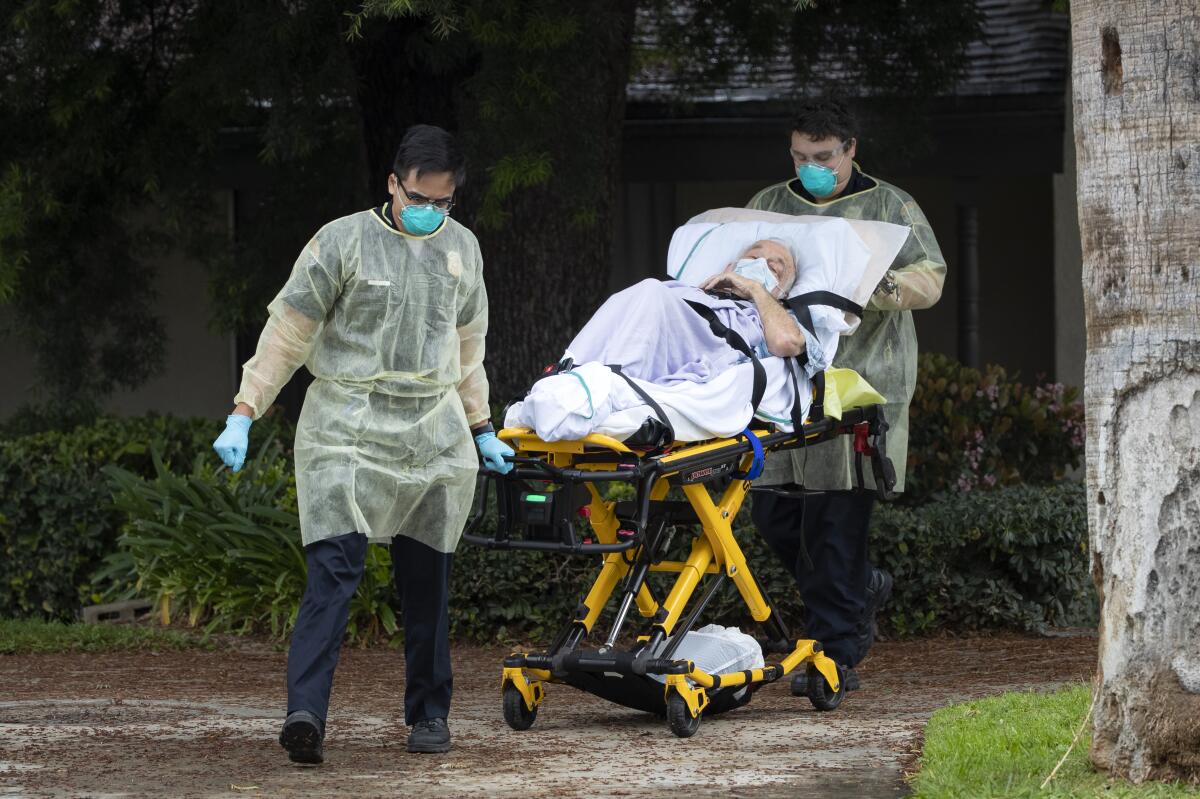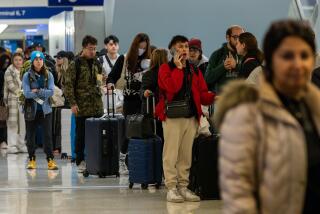Riverside County surpasses 20,000 coronavirus cases. That wasn’t supposed to happen yet

- Share via
Even as fireworks exploded into celebratory lights on the Fourth of July, news from Riverside County’s coronavirus test sites put a damper on the holiday: The county surpassed 20,000 detected coronavirus cases on Saturday, a few days before it was expected.
By Tuesday, the number had jumped to 21,101 cases, adding 546 cases and 20 new deaths that day alone.
Christine Langenwalter, chief quality officer at Desert Regional Medical Center, attributes much of the case jump to summer gatherings and festivities that occurred before last weekend’s holiday.
“Easter was one of the first holidays, but we were all sheltering in place. We had masks, and we didn’t see too much of a bump at all. Mother’s Day, we saw more of a more mild incline. But what really hit us hard is after Memorial Day,” she said.
After some Riverside County residents had gathered with friends for Memorial Day, the socializing phenomenon seemed to domino: case counts continued to rise in connection to Father’s Day gatherings and graduation ceremonies.
But that wasn’t all. Throughout late May and June, nail salons, houses of worship, indoor dining and gyms began to open, said county spokeswoman Brooke Federico.
“People are just going out to more places in the community, whether that’s parks or businesses or other types of community events,” Federico said, noting that the behavior made the county a prime spot for contagion.
Now, Riverside County’s total cases are second to only Los Angeles County, with about 870 in 100,000 people having been infected in Riverside.
Those statistics gained Gov. Gavin Newsom’s attention, resulting in his July 2 order that shuttered all Riverside County bars for both indoor and outdoor guests. The order, which applies until at least July 22, also banned indoor operations at all restaurants, movie theaters and museums.
Hospitals in the county hit 99% capacity in their intensive care units at their peak in late June, remaining in the 90 percentile range throughout early July. Though hospitals reported they could accommodate some patients in surge bedding, they worried that staffing would be too thin to accommodate many more. State-mandated nursing ratios allow for no more than two ICU patients to each nurse.
Desert Regional Medical Center, which usually employs just under 1,000 full- and part-time nurses, has called in 50 to 60 additional traveling nurses to augment its staff in the next couple weeks.
“We are consistently at about 120% of our ICU capacity. That just means that we’ve gone into some overflow areas,” Langenwalter said. “It’s like a gigantic chessboard — depending on the level of care the patient needs, we’re constantly moving people around to congregate them in the best place.”
Hospital officials worry that cases connected to Fourth of July celebrations will add an extreme burden to hospitals. Due to the COVID-19 incubation period, Langenwalter said the holiday’s impact will be drawn out over the next 14 days.
“My concern is that in the past couple weeks, we’ve seen a pretty significant spike in the number of hospitalized patients. And that’s just a reflection of what’s going on in the community. You add that on top of a holiday weekend and family gatherings or festivities and things like that,” she said. “We may see another trend even higher than what we’re feeling right now.”
Her concern isn’t just for the near future: “Anyone in healthcare is kind of wondering what’s going to happen in the fall when the influenza bug collides with the coronavirus bug,” she said.
As people have gotten infected at parties and other socializing events, the average coronavirus patient has gotten younger and younger. While the majority of infected people had previously been in the 40-and-above age category, Federico said the county now tallies more cases from patients between 18 and 39. An increase in cross-household social gatherings may contribute to the trend, she said.
Though many young patients without preexisting conditions recover easily, the average hospitalization age is decreasing, too. Langenwalter has been watching the average inpatient age throughout the pandemic, which went from 64 in March and April to 60 in May and June. During the first few days of July, the average age has dropped again to 58.
“In March, when this started, I did not have any [inpatients] that were in their teens or 20s. Just one in their 30s,” she said. But in June, the hospital treated 21 coronavirus patients in their teens and 20s.
The coronavirus has also been most devastating to the Latino community in Riverside County. About 70% of the people who tested positive for the coronavirus were Latino, when considering the test takers that reported ethnicity. In the county as a whole, 50% of residents are Latino.
Federico said county officials have been running bilingual education and advertising campaigns to try to decrease the spread of the coronavirus among the Latino community.
As coronavirus cases continue to mount, Federico stresses that people must continue to take safety measures.
“Additional research has come out [showing] that three simple behaviors — wearing a face covering, washing hands frequently and keeping six feet of distance from people we don’t live with — can reduce the spread of the disease by 95%,” she said.
More to Read
Sign up for Essential California
The most important California stories and recommendations in your inbox every morning.
You may occasionally receive promotional content from the Los Angeles Times.











